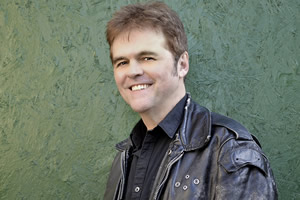Robert Schirmer

|
Robert Schirmer's novel Barrow's Point won the 2015 Gival Press Novel Award and will be published by Gival Press in October, 2016. Barrow's Point was nominated by the press for the National Book Award and the New York Center for Fiction's First Novel Award. He's also published a story collection Living with Strangers (NYU Press), winner of the Bobst Award for Emerging Writers. Over the years he's won an O. Henry Award, a Pushcart Prize, and a fellowship from the Chesterfield Writer's Film Project. His stories have appeared in a wide variety of literary journals such as Glimmer Train, Byliner, Sewanee Review, New England Review, Epoch, Fiction, Joyland, and The Best of Witness. His screenplays have been optioned by Amblin Entertainment and Warner Brothers. Barrow's Point is a novel based on his short story "Fag Killer," which originally appeared in Glimmer Train, Issue 59*, Summer 2006. robertschirmerwriter.com |
Every Bit as Hard as It Sounds |
 |
|
In 2006, my short story "Fag Killer" was published in the summer issue of Glimmer Train. By that point, I was well on my way to turning the story into a novel. "Why a novel?" assorted friends and fellow writers asked. A novel and a short story are such different beasts, after all—one is expansive, the other distilled; one allows for multiple points-of-view while the other should focus on a singular character. Or so the argument goes. I've never felt the clear-cut distinction between novels and short stories that other writers often claim to. Several times I've started out writing short stories that have burgeoned into novels (not that I've finished all of them). I once wrote an entire novel that I ended up boiling down into a twenty page short story. Maybe because "Fag Killer" was forty manuscript pages long and had three point-of-view characters, it had already blurred the line between story and novel, and so writing a full-length version was a logical next step. And expanding the story into a longer work would allow me to resurrect a few dramatic elements I'd cut from "Fag Killer" that still interested me, such as a homoerotic friendship between the main character, a gay cop, and his best friend. When I began writing the novel, I was buoyed by the knowledge that I had the short story to serve as a blueprint. The novel was already "mapped out," in a sense. What writer can resist knowing that some of the work is already done? But after several months of steady progress, I was surprised when I fell off my stride and stopped writing. The novel felt suddenly unwieldy, stationary. I stared at the computer screen, dumbstruck and betrayed. I'd had a great affection for "Fag Killer," a rare enough feeling since, like most writers, I tend toward disappointment after finishing a story—the end product never measures up to your initial divine hopes for it. Why, then, was the novel version frozen in this inert place? I spent months struggling to write my way out of that literary paralysis. Finally, what saved me was a simple revelation: in order to move forward on the novel, I had to let go of the short story. Every scene and character arc that had happened in "Fag Killer" I was trying to replicate in the novel. In short, the story had hamstrung me, corralling my imagination, hog-tying me to a preconceived destiny and not allowing the novel to find its own idiosyncratic life. Once I gave myself permission to push the narrative past the boundaries set up in the short story, I was able to start writing freely again. Still, letting go of the short story wasn't easy. Faulkner was the first to mention the necessity of "killing your darlings" (a phrase which for some reason I always have lodged in my head, rather morbidly, as "killing your babies.") He meant, of course, the necessity of cutting from your story a beloved scene, character, sentence or moment if it distracts from or no longer fits into the work as a whole. Killing your darlings is every bit as hard as it sounds. The darlings are like jealous lovers; they do not want you to stray, to experiment, to leave them behind, to flirt with other darlings. In my case, I had to cut from the novel a couple of scenes that had been critical in the short story. I had to block out my inner voice that kept whispering I love this; don't cut it; find a way to make it fit! I also had to reimagine certain scenes from the short story and even a couple of the characters, to the point where, in the novel, they are nearly different people. The ending of "Fag Killer" I liked very much, but it didn't work as an ending for the novel. And I was advised by numerous friends and concerned citizens that "Fag Killer," while a memorable and provocative title for a single story in a literary journal, was perhaps an off-putting title for a stand-alone book. In the Last Pages section of the Glimmer Train issue in which "Fag Killer" appeared, I mentioned how writing the story had been a struggle of letting go of inhibition and expectation, of fear about what a short story should and shouldn't do. Ironic, then, that writing the novel became yet another exercise in "letting go," this time of what I had previously imagined and the safety net that provided. I had to let go of a finished creation in order to free myself to create another version of the same story. Along the way a few darlings were left stranded by the roadside, but that, unfortunately, is a difficult reality in both storytelling and life. [*We have just a few copies of Glimmer Train Stories #59 available. Please email linda@glimmertrain.org if you'd like to order one.] | |
